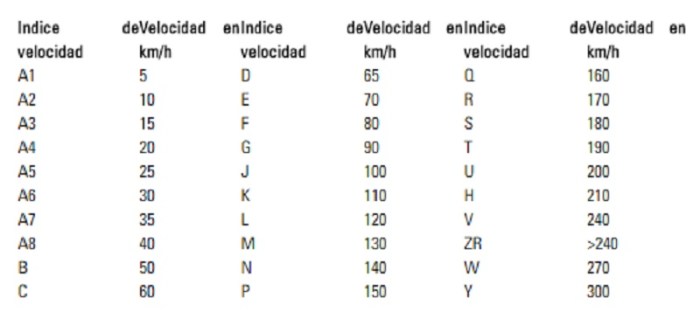Saving money on a low income can feel like an impossible dream. Bills pile up, emergencies pop up, and it’s hard to find extra cash to put away. But don’t worry, you’re not alone! This guide is your secret weapon to smashing those savings goals, even if you’re feeling financially strapped.
We’ll dive into the unique challenges low-income folks face, explore super-effective saving strategies like the “dollar-a-day” method, and show you how to tap into awesome resources and tools that can help you reach financial freedom. Plus, we’ll review a book that’s packed with practical tips and tricks to make saving effortless, even on a tight budget.
Get ready to ditch the money worries and start building a brighter financial future!
The Challenges of Saving on a Low Income

Saving money can be a challenge for anyone, but it can be especially difficult for people with low incomes. These individuals often face a number of financial hurdles that make it hard to put money aside.
Saving on a low income can feel like a total uphill battle, but trust me, it’s totally doable! Whether you’re rocking a no-spend month or tackling those savings challenges, getting your finances in check is the key. Want some tips and tricks from the pros?
Download And Listen Here to learn how to budget like a boss and finally reach those savings goals. You got this, girl! You’re totally gonna slay those financial goals.
Financial Hurdles Faced by Low-Income Individuals
Low-income households face a number of unique challenges that make saving money difficult. These include:
- Limited Income:Low-income earners have less money available to save, as a large portion of their income is already allocated to essential expenses. This can make it difficult to find room in the budget for saving.
- High Cost of Living:Many essential expenses, such as housing, transportation, and healthcare, disproportionately impact low-income households. For example, low-income families may be forced to live in less expensive neighborhoods, which can mean longer commutes and higher transportation costs. They may also have limited access to affordable healthcare, leading to higher medical expenses.
- Unexpected Expenses:Low-income individuals are more vulnerable to unexpected expenses, such as car repairs, medical emergencies, or job loss. These unexpected events can quickly deplete savings and make it even harder to catch up financially.
- Debt:Many low-income individuals are burdened by debt, such as credit card debt, payday loans, or medical bills. Debt payments can consume a significant portion of their income, making it difficult to save.
Strategies for Managing Debt and Prioritizing Essential Needs
It’s important to develop strategies for managing debt and prioritizing essential needs to make saving possible. Here are some practical tips:
- Create a Budget:Tracking your income and expenses can help you identify areas where you can cut back. Many free budgeting apps and tools are available online.
- Negotiate with Creditors:If you’re struggling to make debt payments, contact your creditors and see if you can negotiate a lower interest rate or a payment plan. Some creditors may be willing to work with you, especially if you’re facing a financial hardship.
- Consider Debt Consolidation:Debt consolidation can help you combine multiple debts into a single loan with a lower interest rate. This can make your monthly payments more manageable and free up more cash flow for saving.
- Prioritize Essential Needs:It’s important to prioritize essential expenses, such as housing, food, and transportation. Consider cutting back on non-essential expenses, such as entertainment or dining out, to free up more money for saving.
- Look for Ways to Increase Income:If you’re struggling to make ends meet, look for ways to increase your income. This could include finding a second job, starting a side hustle, or negotiating a raise at your current job.
Effective Savings Strategies for Low-Income Earners

Saving money can feel like an impossible task when you’re struggling to make ends meet. But even if you have a limited income, there are effective strategies you can use to build a solid financial foundation. These strategies can help you reach your savings goals, whether it’s for a down payment on a house, an emergency fund, or simply to have a little extra cushion for unexpected expenses.
The Dollar-a-Day Method
The dollar-a-day method is a simple and effective way to save money, even on a tight budget. This strategy involves setting aside just $1 per day. While it may seem insignificant, the cumulative effect can be substantial over time.
“Saving $1 a day for a year equals $365. That’s a significant amount of money that can be used for an emergency fund, a vacation, or even a down payment on a car.”
Setting Up a Micro-Savings Account
Micro-savings accounts are specifically designed for individuals who want to save small amounts of money regularly. These accounts typically have low minimum balances and allow you to deposit small amounts of money frequently.Here’s a step-by-step guide to setting up a micro-savings account:
- Choose a bank or credit union that offers micro-savings accounts.Many financial institutions offer these accounts, so shop around and compare features and fees.
- Open an account.The process is usually simple and straightforward. You’ll need to provide basic personal information and may need a small initial deposit.
- Set up automatic transfers.This is a key step to ensure you save regularly. You can set up automatic transfers from your checking account to your micro-savings account on a daily, weekly, or monthly basis.
- Track your progress.Keep track of your savings to stay motivated and see the progress you’re making.
Savings Goals and Contribution Amounts
Here’s a table showcasing different savings goals and corresponding contribution amounts:
| Savings Goal | Contribution Amount |
|---|---|
| Emergency Fund (3-6 months of expenses) | $10-$20 per week |
| Down Payment on a Car | $50-$100 per week |
| Vacation | $25-$50 per week |
| Home Down Payment | $100-$200 per week |
Utilizing Resources and Tools for Financial Success

It’s time to level up your financial game! There are tons of resources and tools available to help you reach your savings goals, even on a low income. These resources can provide you with the knowledge, support, and guidance you need to make informed financial decisions and achieve your financial goals.
Accessing Financial Literacy Resources
Financial literacy is key to making smart financial decisions. It empowers you to understand your finances, make informed choices, and ultimately achieve your financial goals. There are many ways to access financial literacy resources. Here’s a flowchart that illustrates the process: StartIdentify your financial literacy needs:
- What areas do you want to learn more about?
- What are your financial goals?
Explore resources:
Saving money on a tight budget can feel like a total uphill battle, but it’s not impossible! It’s all about finding ways to make your hard-earned cash work for you, even if you’re just starting with those small dollar bills.
And, just like your personal finances, getting your business out there in the digital world needs a solid strategy. Check out this awesome article on Fighting Visibility The Mindset and Strategies to Getting Your Business Found Online to learn how to boost your online presence.
Once you’ve got your business on the map, you can focus on reaching those savings goals and making your money work harder for you!
Online resources
Websites, articles, videos, podcasts, and blogs.
Community organizations
Local libraries, credit unions, community centers, and non-profit organizations.
Government agencies
The Consumer Financial Protection Bureau (CFPB), the Federal Trade Commission (FTC), and the Internal Revenue Service (IRS).
Financial institutions
Banks, credit unions, and investment firms. Choose resources that fit your needs:
- Consider your learning style and preferred format.
- Look for reputable sources with accurate information.
Utilize the resources:
Read articles, watch videos, attend workshops, and seek guidance from financial professionals.
Saving money on a budget can be tough, but it’s totally doable! Think of it like this: you’re on a wild ride, like a cowboy on a bucking bronco, but instead of a rodeo, you’re trying to reach your financial goals.
To help you stay focused on the path, check out Western Vibes Advanced Coloring Book Book Three , a coloring book that will keep you chill and help you relax during those tough budgeting moments. You can do this, just like a cowboy wrangling a steer, one dollar at a time!
Apply what you learn:
Create a budget, track your spending, and make informed financial decisions.
Evaluate your progress:
- Are you making progress towards your financial goals?
- Do you need to adjust your approach or seek additional support?
Continue learning and improving:
- Financial literacy is an ongoing process.
- Stay informed about financial trends and changes.
End
Utilizing Budgeting Apps and Financial Planners
Budgeting apps and financial planners can be powerful tools to help you track your spending, create a budget, and reach your savings goals. They can help you identify areas where you can cut back, set spending limits, and stay on track with your financial goals.
These apps and planners offer a variety of features, such as:
- Expense tracking:Automatically track your spending by linking your bank accounts.
- Budgeting:Create and manage a budget based on your income and expenses.
- Goal setting:Set financial goals, such as saving for a down payment on a house or paying off debt.
- Financial insights:Provide insights into your spending habits and identify areas for improvement.
- Savings challenges:Motivate you to save by setting up challenges and tracking your progress.
Some popular budgeting apps and financial planners include:
- Mint:A comprehensive budgeting app that tracks your spending, creates budgets, and provides financial insights.
- YNAB (You Need a Budget):A popular budgeting app that emphasizes zero-based budgeting, where you allocate every dollar of your income to a specific purpose.
- Personal Capital:A financial planning platform that provides budgeting tools, investment management, and retirement planning.
- EveryDollar:A budgeting app developed by Dave Ramsey that focuses on debt management and financial freedom.
Government Programs and Community Resources
There are a number of government programs and community resources available to help low-income individuals improve their financial well-being. Government Programs:
- SNAP (Supplemental Nutrition Assistance Program):Provides food assistance to low-income families.
- TANF (Temporary Assistance for Needy Families):Provides cash assistance to families with children.
- WIC (Women, Infants, and Children):Provides food assistance and nutrition education to low-income pregnant women, new mothers, and young children.
- Earned Income Tax Credit (EITC):Provides a tax credit to low- and moderate-income working individuals and families.
- Housing Choice Voucher Program:Provides rental assistance to low-income families.
- Medicaid:Provides health insurance to low-income individuals and families.
Community Resources:
- Local food banks:Provide food assistance to low-income families.
- Community centers:Offer a variety of programs and services, such as job training, financial literacy workshops, and childcare.
- Non-profit organizations:Provide financial assistance, housing support, and other services to low-income individuals and families.
- Credit counseling agencies:Offer guidance and support to individuals struggling with debt.
Book Review: Effortlessly Reach Your Savings Goals
This book offers a practical and accessible approach to saving money, even on a low income. It provides a roadmap for building financial stability, with a focus on small, achievable steps that can lead to significant results over time.
Saving money on a low income can feel like trying to catch a butterfly with a net made of cobwebs. It’s tough, but not impossible! Sometimes you need a little creative inspiration to help you stay motivated. If you’re looking for a new hobby that can help you relax and de-stress, maybe try learning watercolor painting! Check out The Painting Wildflowers Bible Techniques for Beginners and Experts Create Stunning Botanical Art in Watercolor with Step-by-Step Guidance for some amazing tips and tricks.
Who knows, maybe you’ll even be able to sell your artwork and make some extra cash! Once you’ve got a little extra in your pocket, you’ll be able to save even more and reach your financial goals. Just remember, even small steps can lead to big results!
Key Themes and Takeaways
The book emphasizes the importance of establishing a budget, setting realistic savings goals, and creating a system for tracking progress. It encourages readers to embrace a mindset of financial responsibility and to view saving as an investment in their future.
Strengths in Addressing Low-Income Savings Challenges
The book’s strength lies in its recognition of the unique challenges faced by low-income earners. It acknowledges the limitations of traditional savings advice, which often assumes a higher income level and greater financial flexibility. The book provides practical strategies and tools tailored to the specific needs of those with limited resources.
Examples of Practical Advice and Tools
The book offers a range of practical advice and tools, including:
- Savings Challenges:The book introduces a series of savings challenges, such as the “$1, $5, $10, $20, $50, $100, $300, $500” challenge and the “No Spend Month” challenge. These challenges provide a structured framework for building savings habits and tracking progress.
- Budgeting Templates:The book provides downloadable budgeting templates to help readers track their income and expenses. These templates can be customized to fit individual needs and preferences, making it easier to identify areas where spending can be reduced.
- Savings Goals:The book encourages readers to set realistic savings goals, starting with small, achievable targets. It emphasizes the importance of breaking down large goals into smaller steps, making the process feel less daunting.
- Resource Utilization:The book highlights the importance of utilizing available resources, such as free financial counseling services, government assistance programs, and community organizations. It encourages readers to explore these resources to access support and guidance in managing their finances.
Last Recap
Saving money on a low income might seem tough, but it’s totally achievable! By understanding your challenges, embracing smart strategies, and leveraging the right resources, you can build a solid financial foundation. Remember, every little bit counts. So, take that first step, set your savings goals, and watch your financial dreams become reality!
FAQ Section
What are some common financial hurdles faced by low-income individuals?
Low-income individuals often face challenges like high housing costs, limited access to affordable healthcare, and unpredictable income streams, making it difficult to save.
Is it really possible to save money on a low income?
Absolutely! Even small amounts saved consistently can add up over time. This guide will show you how.
What are some examples of government programs that can help low-income individuals?
Programs like SNAP (food stamps), TANF (Temporary Assistance for Needy Families), and housing assistance can provide vital support to low-income families.

